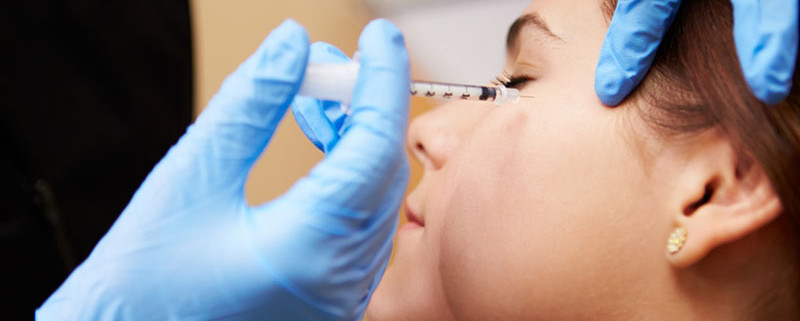So, You’re Thinking About Botox?
Yet, you’re not sure if it is safe to have a poison, and this one is a mighty strong one, injected in your face, whether it is a painful and bruising procedure or if a dropped eyebrow, funny smile and drooling are the norm. And certainly, you do not want to look “plastic”, flat with expressions that of a rail…as the cloned features you just saw a few days ago on the pages of a local social magazine!
Botox is a toxin that in some hands becomes a magic wand; in others it is a poison. It is produced by specific bacterium, accidentally discovered to smooth the wrinkles; in more than 2 decades it has become the most frequently used injectable in the world with amazingly high safety record.
Botulinum toxin does not work directly on a muscle; it simply prevents its stimulation by either blocking or weakening the impulse coming from the brain.
Historically botulinum toxin has been used for “frown lines”, forehead lines, “bunny lines” at the bridge of your nose, to flatten the “crow’s feet” and improve the upper lip “smoker lines” (drinking from a bottle or through a straw contributes greatly to these lines).
Under certain conditions you may benefit from particularly tiny doses injected into the cheek lines; only a small dose is necessary to make your eyes bigger and to elevate a tip of the nose or corners of the mouth.
A total face sculpting can be achieved with botulinum toxin using relatively small doses. Indeed, much smaller than so-called “recommended” doses.
Botox can be used in treatment of horizontal neck lines and vertical neck “bands” as well as the mid-chest wrinkles; it is used successfully in treatment of migraine and other headaches and in hyperhydrosis or excessive sweating. It may be very useful in numerous neurological disorders, gastroesophageal reflux and incontinence although many of these have not yet been approved by FDA.
It seems that every year brings more possibilities of using botulinum toxin in various medical conditions.
The concept of aesthetic botulinum toxin has changed around the world several years ago yet very few are ready to introduce it here since it would require a significant decrease in the dosage.
What is this “new” concept?
The point is to re-inject the treated areas as soon as the muscle strength is increasing. Consequently, if a wrinkled skin remains relaxed for several months (usually no more than 3-4 cycles) it is enough time for the skin to “repair” itself and the underlying wrinkles are fully corrected. Then, only a minimal dose may be needed to maintain the effect and chances are the effect will last longer.
This can be achieved by either using a “recommended” industrial doses to paralyze your face or by having much smaller doses that will allow you to maintain your expressions and look natural.
Ask questions, educate yourself then ask…more questions. No, there is most likely no need for 6 injection sites in your forehead…and no, it is not always necessary to inject the muscle between your eyebrows. And yes, it is a good idea to start with a smaller dose. You can always add more…
Above all, ask your doctor and remember the number of units injected as well as the concentration of the Botox.
Dysport is an alternative to Botox. It is a similar toxin produced by the same bacteria and used for decades outside of the US has been recently approved by FDA.
It’s price? Pretty much the same…
Effect? Similar…
The difference? You may expect to see results much sooner and these may last longer.
However, Dysport is somewhat weaker than Botox therefore requires more units to be injected.
The choice is clearly yours.
And remember: Less is more…



